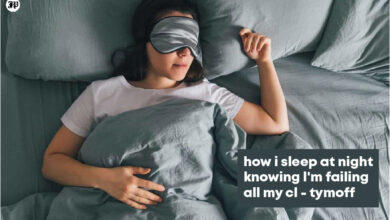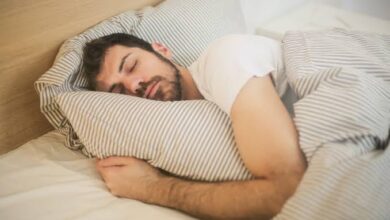The Function of Biofeedback in the Management of Anxiety

Millions of people worldwide suffer with anxiety disorders, which have an influence on daily living and functioning. Even while medicine and counseling are good therapies, some people look for supplementary methods like biofeedback to help them manage their symptoms. Through the use of biofeedback, people can enhance both their physical and mental well-being by learning how to self-regulate physiological processes including skin temperature, muscle tension, and heart rate. The function, efficacy, and possible advantages of biofeedback in the treatment of anxiety are examined in this article.
Knowing About Disorders of Anxiety
Excessive fear, concern, and nervousness are hallmarks of a variety of diseases together referred to as anxiety disorders. Panic disorder, social anxiety disorder, generalized anxiety disorder (GAD), and particular phobias are common varieties. While there is a wide range of symptoms, elevated physiological arousal—such as elevated heart rate, tense muscles, and sweating—comes with cognitive symptoms like racing thoughts and trouble focusing.
Psychotherapy, such as cognitive-behavioral therapy, and medication, such as selective serotonin reuptake inhibitors, are commonly used as traditional therapies for anxiety. Despite their effectiveness, some methods might not be suitable for everyone due to personal preferences, contraindications, or adverse effects. This is when biofeedback and other complementary therapies are useful.
Biofeedback: What is it?
Utilizing electrical sensors to gauge physiological activity such as skin conductivity, muscular tension, heart rate variability, and brain wave activity, biofeedback is a therapeutic approach. The person is then given access to this information in real-time, usually through visual or auditory signals, enabling them to learn how to consciously control their body reactions.
The theory of operant conditioning serves as the foundation for biofeedback. People can learn to manage normally involuntary physiological processes willingly by receiving rapid feedback about them. This can eventually result in better self-regulation and stress and anxiety symptom control with practice.
The Workings of Biofeedback in the Management of Anxiety
Several physiological reactions linked to anxiety disorders can be targeted by biofeedback:
Breathing: Using deep, slow breathing exercises can assist control autonomic arousal and lessen the sensations of anxiety.
Heart Rate Variability (HRV):
Improving emotional regulation and lowering anxiety can be achieved through training to raise HRV, which represents autonomic nervous system flexibility.
Tension in the Muscles:
Biofeedback-based progressive muscle relaxation techniques can reduce the tenseness in the muscles linked to anxiety.
Skin Temperature:
By lowering sympathetic nervous system activity, biofeedback can assist people in raising their peripheral skin temperature, a sign of relaxation.
Electrodermal Activity:
Tracking skin conductivity can help with relaxing techniques and reveal stress levels.
People can break the cycle of stress and anxiety reactions by becoming aware of and in control of these physiological processes. This promotes serenity and enhances general wellbeing.
Biofeedback’s efficacy in managing anxiety
The effectiveness of biofeedback for anxiety disorders has been the subject of numerous studies, with encouraging findings. After reviewing 55 research, a meta-analysis that was published in the Journal of Clinical Psychology found that biofeedback therapies were useful in lowering anxiety symptoms in a variety of contexts and demographics.
In particular, biofeedback has been proven successful in:
Assisting people with generalized anxiety disorder to lessen their excessive concern and physiological arousal.
Training on relaxation techniques to control panic episodes and their accompanying symptoms is known as panic disorder.
Reducing anxiety and enhancing self-regulation in social situations are goals of social anxiety disorder.
Phobias: Using relaxation methods in conjunction with exposure therapy can help with desensitization.
For those who choose non-pharmacological methods, biofeedback is frequently utilized as a stand-alone treatment or as an addition to conventional therapies. Depending on personal variables including motivation, consistency in practice, and the intensity of anxiety symptoms, its efficacy may differ.
Different Biofeedback Technique Types
There are various sorts of biofeedback techniques that focus on distinct physiological systems.
Electromyography (EMG) Biofeedback:
Assesses muscle strain and teaches people how to release particular muscle groups.
Heart Rate Variability (HRV)
Biofeedback aims to control heart rate rhythms in order to ease tension and encourage relaxation.
Temperature Biofeedback:
Tracks skin temperature to encourage relaxation and peripheral blood flow.
Electroencephalography (EEG) Biofeedback (Neurofeedback):
Assesses brain wave activity to enhance emotional control, enhance focus, and lessen anxiety symptoms.
The technique selected will rely on the particular symptoms and treatment objectives of the patient.
The Use of Biofeedback in the Management of Anxiety
When utilized as a therapeutic method for anxiety treatment, biofeedback has the following benefits:
Non-invasive:
Since it doesn’t entail drugs or invasive procedures, people who prefer natural remedies or are worried about side effects might benefit from it.
Customizable:
To maximize effectiveness, biofeedback protocols can be tailored to match the demands and responses of each individual.
Empowering:
Biofeedback increases self-awareness of physiological reactions and gives people the ability to actively participate in their therapy by giving them real-time feedback.
Long-term Benefits:
Developing self-regulation abilities through biofeedback training can help maintain anxiety reduction long after treatment is finished.
Complementary Approach:
By improving overall treatment outcomes and lowering dependency on medicine alone, biofeedback can be used in conjunction with established therapies.
Including Biofeedback in Treatment Plans for Anxiety
Collaboration between mental health specialists and healthcare practitioners who have received biofeedback training is necessary to incorporate biofeedback into clinical practice. In order to effectively address the complex nature of anxiety disorders, a complete treatment strategy may incorporate biofeedback along with cognitive-behavioral techniques, relaxation training, and lifestyle modifications.
Usually, the procedure entails:
Assessment:
Determining the particular physiological reactions and anxiety symptoms that biofeedback can address.
Training:
Encouraging people to practice self-regulation skills and operate biofeedback equipment.
Monitoring Progress:
Keeping track of symptom improvements and making necessary adjustments to treatment plans.
Maintenance:
Assisting people in keeping the progress they’ve made with biofeedback training and incorporating new abilities into their everyday lives.
Prospective Routes and Aspects to Take into Account
Although studies have shown that biofeedback is effective in reducing anxiety, further study is being done to see how it can work in conjunction with cutting-edge technologies like virtual reality and smartphone apps. These developments are meant to improve biofeedback therapies’ personalization, accessibility, and engagement for a range of demographics.
Nonetheless, obstacles including the lack of readily available qualified professionals, the high expense of tools, and the unpredictability of personal reactions highlight the necessity of ongoing study and the incorporation of biofeedback into standard mental health services.
In summary
As an effective supplementary therapy for anxiety disorders, biofeedback gives people the ability to better control the physiological reactions linked to anxiety. People can lessen their anxiety symptoms, feel better emotionally, and live better overall by learning to control their heart rate, muscle tension, and other body functions. Biofeedback has the potential to be a flexible and powerful treatment approach for the all-encompassing management of anxiety disorders as long as research and technology stay up to date.



